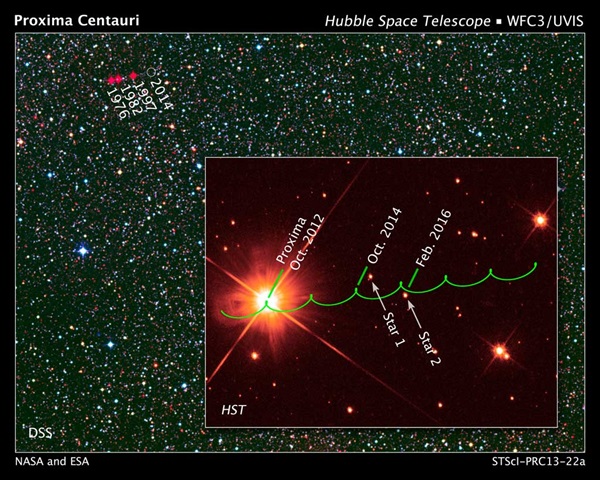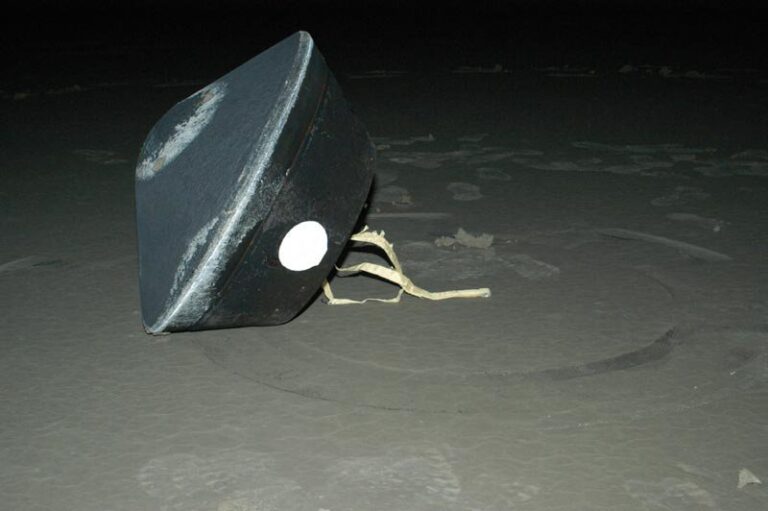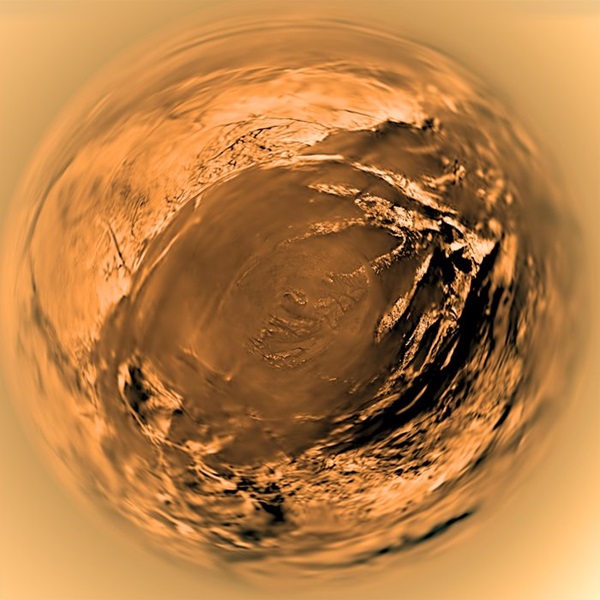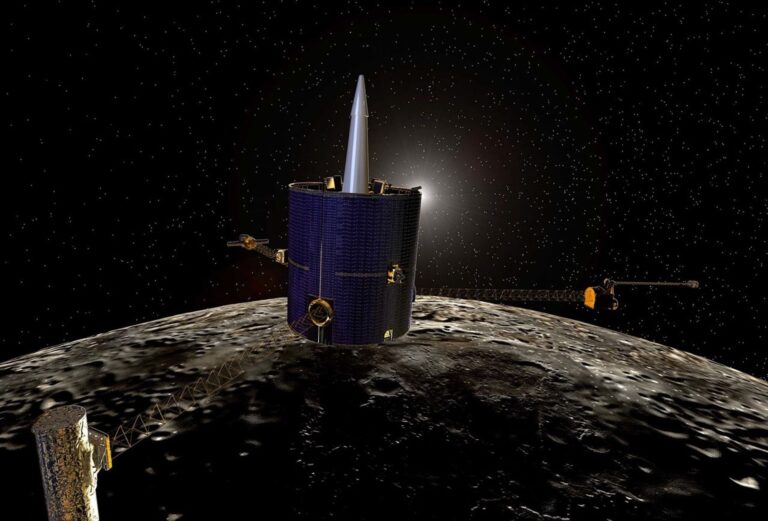The opportunities will occur in October 2014 and February 2016 when Proxima Centauri, the star nearest to our Sun, passes in front of two other stars. Astronomers plotted Proxima Centauri’s precise path in the heavens and predicted the two close encounters using data from Hubble.
“Proxima Centauri’s trajectory offers a most interesting opportunity because of its extremely close passage to the two stars,” said Kailash Sahu from the Space Science Telescope Institute (STScI) in Baltimore, Maryland.
Red dwarfs are the most common class of stars in our Milky Way Galaxy. Any such star ever born is still shining today. There are about 10 red dwarfs for every star like our Sun. Red dwarfs are less massive than other stars. Because lower-mass stars tend to have smaller planets, red dwarfs are ideal places to go hunting for Earth-sized planets.
Previous attempts to detect planets around Proxima Centauri have not been successful. But astronomers believe they may be able to detect smaller terrestrial planets, if they exist, by looking for microlensing effects during the two rare stellar alignments.
Microlensing occurs when a foreground star passes close to our line of sight to a more distant background star. These images of the background star may be distorted, brightened, and multiplied depending on the alignment between the foreground lens and the background source.
These microlensing events, ranging from a few hours to a few days in duration, will enable astronomers to measure precisely the mass of this isolated red dwarf. Getting a precise determination of mass is critical to understanding a star’s temperature, diameter, intrinsic brightness, and longevity.
Astronomers will measure the mass by examining images of each of the background stars to see how far the stars are offset from their real positions in the sky. The offsets are the result of Proxima Centauri’s gravitational field warping space. The degree of offset can be used to measure Proxima Centauri’s mass. The greater the offset, the greater the mass of Proxima Centauri. If the red dwarf has any planets, their gravitational fields will produce a second small position shift.
Because Proxima Centauri is so close to Earth, the area of sky warped by its gravitation field is larger than for more distant stars. This makes it easier to look for shifts in apparent stellar position caused by this effect. However, the position shifts will be too small to be perceived by any but the most sensitive telescopes in space and on the ground. The European Space Agency’s Gaia space telescope and the European Southern Observatory’s Very Large Telescope on Mt. Cerro Paranal in Chile may be able to make measurements comparable to Hubble’s.
To identify possible alignment events, Sahu’s team searched a catalog of 5,000 stars with a high rate of angular motion across the sky and singled out Proxima Centauri. It crosses a section of sky with the apparent width of the Full Moon as observed from Earth every 600 years.










